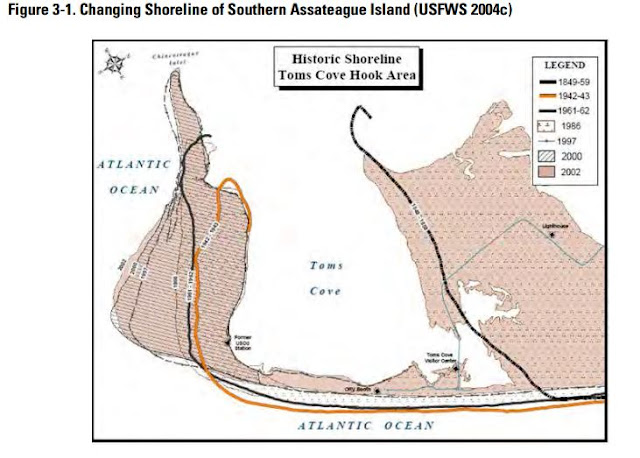Chincoteague and Assateague: What is the ground made of?

"For every 1-foot rise in sea level, it has been estimated that coastal barrier islands move 100 to 1,000 feet inland." Photo taken from the Federal Wildlife Service refuge resources https://www.fws.gov/uploadedFiles/CCP_Chapter3(1).pdf Perhaps one of the strangest things about Chincoteague is the land itself. This week I used the Web Soil Survey(WSS) to try and understand one of the craziest things we saw on our visit to Chincoteague. If you pay attention as you drive across the bridge to Chincoteague, you will see it too. And you will wonder as my son and I did. Why in the world would anyone build on an island where the strip of land is barely above the water level of the marsh. Photo is taken from realestate.com This is one of many homes on Marsh Island That's right. There is a marsh island just off the shore of the island. And it is amazing that so many large residential building structures wer...

